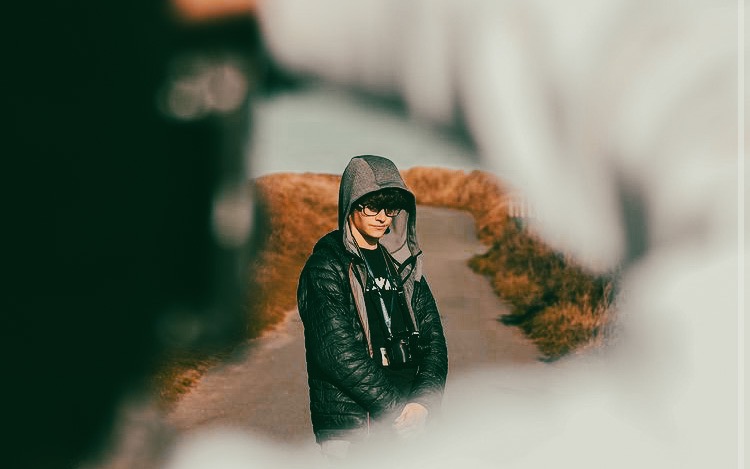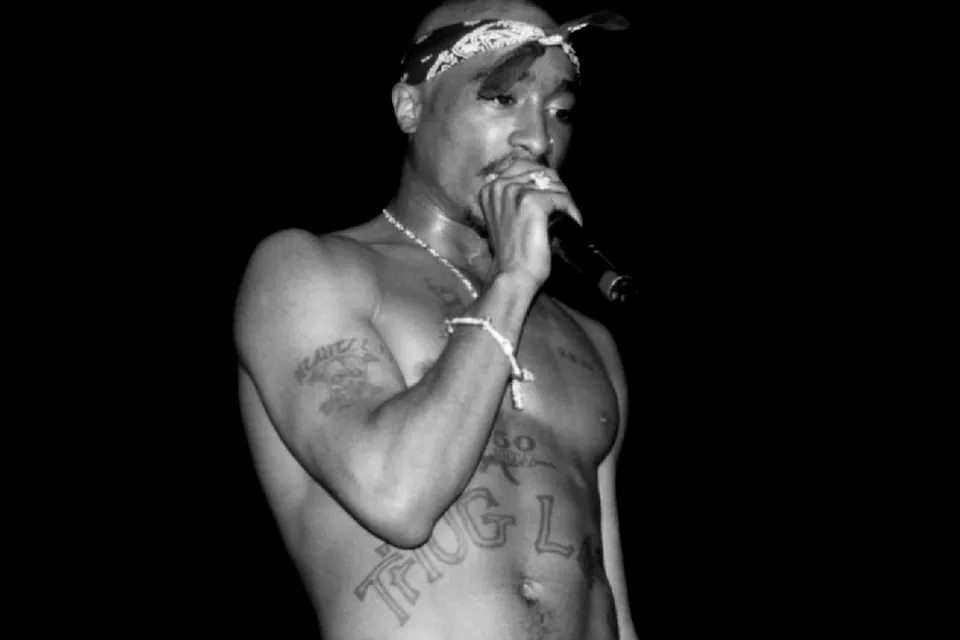Unit 12 - Specialist study in creative media production
- Dylan Cox

- Jan 24, 2023
- 7 min read
Updated: Mar 21, 2023
Introduction
This Unit is designed to provide an opportunity for myself to take greater control of my learning by independently researching and presenting an investigation into a field of creative media in which I have a personal interest in and could potentially focus on in the future as I look to take my professional career further. It is also going to be helping me with further understanding what direction to take my Final major project (FMP) at the end of this college year, giving influence and help with decision making for my completed proposals. To begin with this unit I will be researching and examining the influence of other creators that also do what I aspire to do to build a greater understanding of what is expected of me, giving me the opportunity to demonstrate a greater depth of understanding of the field I want to do as a whole.
As well as this I will also be focusing on my final major project as I look to give a more in-depth look into documentary photography as this is the type of media I look to produce when partaking in my final major project at the end of my college year.
Initial research | Documentary Photographers
1) Chi Modu

His unique style of documenting has always stood out to me as his images always made you feel as you was involved and actually there in that moment in time. This was down to his his signature approach as it was crisp and intimate, he captured his subjects as heroes, but with an up-close humility. He was the photographer behind some of hip-hop’s most celebrated photographs in history, Documenting the "golden age" of hip-hop, his clients included greats such as Tupac, Biggie Smalls, Snoop Dogg, LL Cool J, Ice Cube, Diddy, Dr Dre, Q-Tip, Mac Miller and Mary J Blige. His work featured on album covers for Snoop Dogg, Method Man and Mobb Deep and has also worked for Rolling Stone and the New York Times. In addition to his impressive collection of hip hop photos, Chi has also tested the waters of travel, sports, entertainment, and lifestyle images. Despite the differences in his subject matter, Chi’s work has a singular focus as it all reflects his refreshing take on the world.
2) Ricky Powell

Ricky was an American photographer who documented popular culture including the likes of hip hop and Street art around America. His photographs had gathered a large audience over the years and have even been featured in big newspapers such as The New York Times, Vibe and Rolling Stones swell as many more big named platforms. These photographs featured many unscripted portraits of big artists of his time, Madonna being one of them along with many other popular culture artists and even just regular common people. Powells work is now showcased across a handful of exhibitions across the globe such as New York, Paris, Los Angeles and San Francisco.
3) Estevan Oriol

Estevan Oriol is a photographer and director based in Los Angeles. He is best known for his distinct and gritty 35mm B&W style in which he documents Los Angeles gang culture as well as celebrities within film and hiphop. Estefan's work has been cubically featured in many places in the media such assign magazines, album covers and in many exhibitions across the world. Oriol is also known for directing several music videos for the likes of Blink 182, D12, Cypress Hill and more.
Reflect on your own work
One of the best ways to improve your photography is to look at your own pictures with a positively critical eye. Viewing the photos you have made and deciding which ones you like and do not like, and why, will help you build your own photographic style. I believe to analyse a photo you have to break it down into five key elements, these being the following :
Light/Exposure
Composition
Tone/Colour
Timing
Context
Image One

Light / Exposure
For this image I used the natural sunlight to my advantage to really bring out the colours in this image. on this day the sun was shining down on Goodison road perfectly to my advantage, removing the need for any artificial lights.
Composition
When lining up this shot I wanted to make sure the older couple were my main point of focus as I felt they stood out to me as they were dressed in bright colours for the game.
Tone / Colour
For the tone and colour of this image I had put the RAW version of this image into Lightroom. On here I made tweaks to the saturation and the brightness in order to make the colours really pop. Specifically on the main two people in the centre of the image as I want them to be the main subjects in my photo.
Timing
To capture this image I waited on the pavement outside Goodson road looking out for people that caught my eye, if anyone looked to stand out to me or look interesting I would snap a photo of them. And on this occasion this couple stood out me. so I aimed my camera towards them, ensuring they were the centre of my screen and in ficus and I then took the picture.
Context
This photo was taken one match day outside Everton's home ground just a few minutes till kick-off so everyone was rushing to get to their seats meaning it made a great opportunity to get pictures of people in a rush.
Inspiration
Chi Modu is a photographer I look up to as I begin my own journey of a photographer and I feel has a big influence on how I present myself as a photographer. One example of his influence would be that he inspired me to look into and try the B&W style in my photos. The is because its an efficiant way of creating moody looks.
My image
Chi modu
Documentary photography
Documentary photography usually refers to a popular form of photography used to chronicle events or environments both significant and relevant to history and historical events as well as everyday life. It is typically undertaken as professional photo journalism, or real life reportage, but it may also be an amateur, artistic, or academic pursuit.

Documentary photographs are one of the most direct and confrontational art forms, grabbing a snapshot moment before it disappears forever. In contrast with other types of photography, documentary photographs are more instantaneous, responding to events without staging or artifice. This means the photographer has to be in the right place at the right time, waiting for what the great photographer Henri Cartier-Bresson called “the decisive moment.”
As well as capturing these “decisive moments” in history, there is often a brutal honesty to documentary photographs which can make for difficult viewing. They expose uncomfortable truths we might rather turn away from, tying it closely with photojournalism. It is this gritty, quality that makes the medium so important, encouraging us to think deeper about the state of the world in which we are living. Every now and then, a documentary photograph appears that concisely captures the spirit of the zeitgeist, and it is these images that become a permanent marker of our history. Writer Susan Sontag describes these photographs in her radical essays On Photography, 1977, as “images that do not seem to be statements about the world so much as pieces of it.”
Presentation As part of this unit we was required to put together and organise a presentation to introduce our plans for our courses Final major project. In this presentation I talked about photographers that have inspired me as well as influenced my own style of photography.
Showreel.
Below is a showreel that i have edited on cap-cut, showcasing the work that i have produced during my time at southport college. Featuring the likes of both my music videos, Product advert and a few of my photos outside of college. I put this together using Cap cut with the backing track of Hoe Cakes by "MF DOOM".
Critically evaluate
Dylan James Cox - 40089534 - Evaluation Unit 12
For my Final major project I decided to go with a photo documentary style project, showcasing hip hop culture within liverpool. This is something that interests me as I have recently done a photo documentary for a previous unit and am determined to improve this and explore more into this genre of photography.
I also have a big interest in hiphop and am really interested into the prospect of looking more in depth into the culture and impact it has on my home city, Liverpool.
As spoken about at the beginning of this unit my main inspiration for this project was from a man called Chi Modu. His ability to capture his surroundings and portray them and his subjects as raw as possible was a trait in which he had mastered over the year of shooting for world famous hip hop stars. And I feel looking into him and looking in depth at his techniques he has used to further improve my own work.
As part of my research leading up to my amp I have also looked into a handful of other documentary photographers and hiphop photographers to further expand my field of knowledge and get a better understanding of the theme that I look to portray myself. This involved dipping into a small bit of the history of photo documentaries where I briefly highlighted historical images that had a rather big impact on people due to the types of topics documented through the power of photos.
One key purpose of this unit was to help me gather ideas for my upcoming final major project, and I feel this really helped with my final decision making when deciding what project idea to pursue. In the end I finally decided that for my final major project I will be conducting a photo documentary on Liverpools hiphop culture as I am inspired by the photographers I had researched in this unit and want to test my abilities myself.
One main task that sticks out to me from this unit was the powerpoint presentation as I personally found this quite challenging. This was because despite me knowing my class mates for over a year and a half now I found it quite difficult to conduct such presentation infant of them. I feel this effected my ability to properly get my point across when presenting my idea to my class. Because of this I then eventually decided to try a second time but instead of presenting it live to the class I recorded myself presenting it as I found it easier as I was able to read off a script I had written and have my PowerPoint on screen at the same time.
Overall I believe this unit has really helped me in my final decision making when deciding on a project theme as having this opportunity prior to the project allowed me with extra time to thoroughly research and look at my options.



























Comments